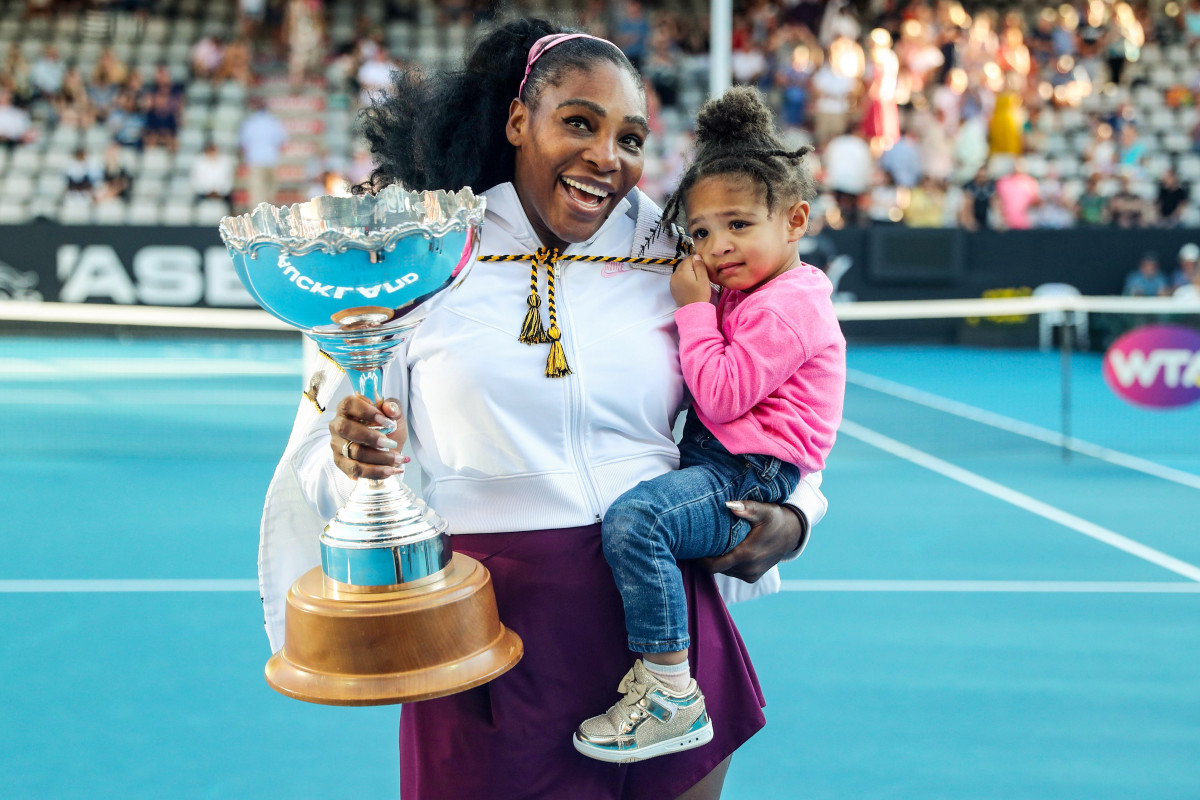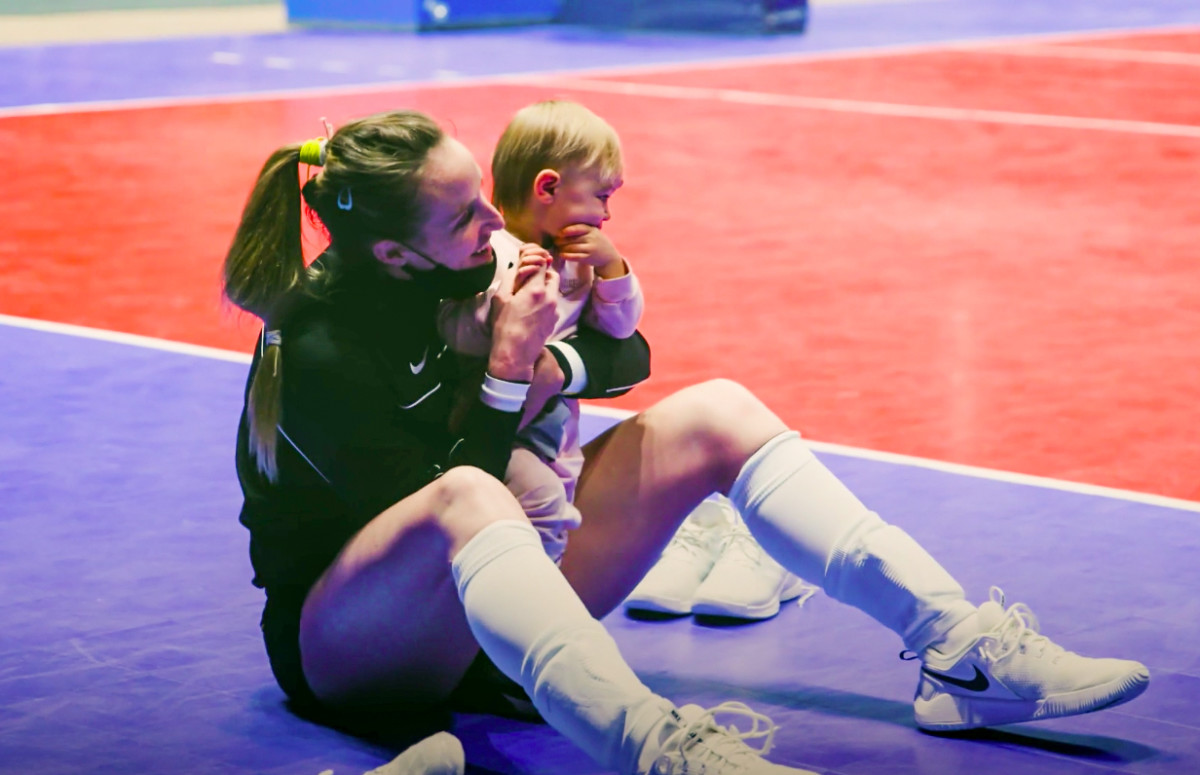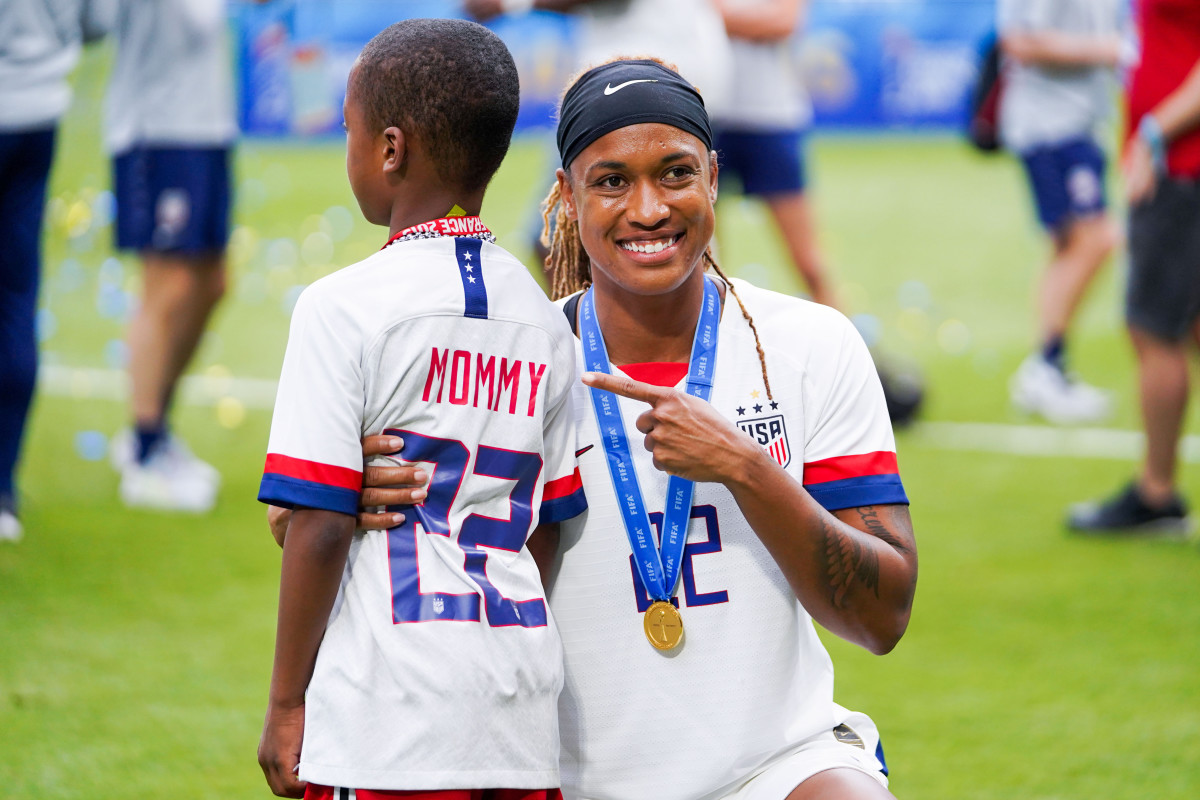The Players With Kids Are Alright
When the WNBA Players Association began negotiating a new collective bargaining agreement in March 2019, the group was set to fight for improved parental leave, childcare assistance and other benefits for the parents among its members. But looking around, the union didn’t see a blueprint to follow—no sporting organization provided the kind of support it sought for its athletes before, during and after pregnancy. So the WNBPA would create a model of its own.
Guaranteed fully paid parental leave was a crucial foundation. But what about support for players who wanted to adopt? Or use a surrogate? Or who wanted to freeze their eggs now, in case they might have children in the future? And later, what about ensuring access to childcare and family housing?
Facing these kinds of questions, the union initiated a series of discussions—one-on-one and in small groups, with active players and retired ones—seeking input from mothers and anyone who might eventually take that path. “We were considering every single player and every circumstance that could exist,” says WNBPA president and L.A. Sparks forward Nneka Ogwumike. “And eventually [we realized] we were setting a precedent, not just for women in sports, but for women in the workplace.”

In the end the union made a splash with a suite of policies in the CBA that was finalized in January 2020, from the guarantee of fully paid maternity leave to standardized accommodations for nursing and pumping. A $5,000 annual stipend was set for childcare, plus a requirement that league-sponsored housing include a second bedroom for any player with a child. For anyone with at least eight seasons in the league, $20,000 can be allocated annually (and up to $60,000 total) for costs related to surrogacy, adoption, fertility treatment or egg-freezing.
At the time, there was nothing quite like it in U.S. professional sports—but little more than a year later, that’s changing, as other women’s leagues start to build off the work done by the WNBA.
We have to stop doubting pregnant women. Stop doubting that they can perform at the highest levels.
— Athletes Unlimited (@AUProSports) March 22, 2021
We are leading the way by affirming that athletes have the power to decide when to disclose they’re pregnant, they determine when and how they can play.#BeUnlimited x @SkyDigg4 pic.twitter.com/EaQMD9Q7mj
The NWSL Players Association started negotiating its first CBA this spring and aims to win similar maternity protections. (“Our hope is to stand on the shoulders of the WNBA,” says NWSLPA executive director Meghann Burke.) Meanwhile, Athletes Unlimited—a women’s sports organization that runs pro softball, volleyball and lacrosse leagues—unveiled its first pregnancy and parenthood policy in March, allowing players to make their own decisions about when to disclose a pregnancy and when to start or stop training, and also providing childcare while an athlete is in-season. In a nod to the league that set the standard, Athletes Unlimited announced its new policy in a video narrated by WNBA point guard Skylar Diggins-Smith, who in 2018 felt so unsupported by her own league that she hid her pregnancy.
“I’m honored that we’re seen as the leaders,” Ogwumike says. “But by no means do I feel as though we’ve hit any finish line. Because once we stop, that kind of sets the bar for other leagues—and we definitely don’t want to draw a ceiling for anyone.”

These formal protections are new, but the idea of an athlete trying to juggle motherhood with a career is not. Sheryl Swoopes debuted in the WNBA’s inaugural season, in 1997, just six weeks after giving birth. Joy Fawcett was the only athlete on the field for every minute of every World Cup and Olympic game that the U.S. women’s national team played between 1995 and 2003—and around that schedule she managed to raise three daughters. But without guaranteed protections, building an athletic career as a mother has always been a dicey endeavor. There were rarely explicit roadblocks or limitations, but also rare were accommodations or support, and, as a result, players often fell through the cracks.
“I don’t think the intention was to punish moms, but … sometimes that [could] be the result,” says Lindsay Kagawa Colas, an agent for Wasserman (where she’s now on maternity leave herself) who represents WNBA players and female Olympic athletes across a range of sports.
With no guaranteed league resources, athletes were often left to observe how other women, often in other sports, made motherhood work; then they’d try to hack it on their own. Former softball player Jessica Mendoza, for one, closely watched the U.S women’s national soccer team. “I remembered Joy Fawcett [with her three kids],” says Mendoza, who played professionally in the 2000s and represented the U.S. in two Olympics before pivoting to broadcasting, now with ESPN. The women’s soccer players “had kind of paved the way in the ’90s ... trying to fight for things like equity and maternity, showing you can be a high-level athlete and have children.” And Mendoza wanted to do the same in softball: “I think a lot of it had to do with the fact that there were so few within our sport that had ever done it, and I wanted it to be more of a norm.”
After Mendoza won a silver medal with Team USA in Beijing, in 2008, she took a year off to try to get pregnant. When she returned, a few months after her son, Caleb, was born, in 2009, she felt secure in her playing ability—but she was still nursing, and when she soon after showed up for national team tryouts at the Olympic Training Center, her heart sank. There was nowhere for the veteran outfielder to pump breast milk, and nowhere to store her supply.
“I tried to push through it, and I ended up losing my milk,” she says. “It was devastating.”
Mendoza ultimately made the national team and helped the U.S. win a world championship in 2010 before jumping back into club play with National Pro Fastpitch. And there she found a similar situation: There was nothing explicitly in her way, but there was no support system for parents, either. She managed childcare only because her husband was able to quit his job for the length of the season.
“I had teammates all the time come up to me and say, ‘When I have kids, I would never play’—judging [me] even within my own team,” says Mendoza. “Their idea of motherhood was not playing a sport; you can’t do both. ... That bothered me. But I also felt like: That’s why they need to see it.”

That loneliness of being the only mother on a team rang true a few years later for Jessica McDonald, too. McDonald was 23, coming off of successful youth and college runs, when she got pregnant in 2011. She was rehabbing a knee injury at the time and, combined with the new child, she assumed her playing career was over. As a fallback, she threw herself into a job as an assistant coach for the men’s squad at Phoenix College in Arizona, practicing with the team into the eighth month of her pregnancy … and then soon again after giving birth. All along, she never imagined she would ever seriously play again—but when her new son, Jeremiah, was seven months old she had an opportunity to play a short season in Australia, which turned into an offer for the inaugural NWSL season … which proved a tough long-term proposition. In those early days of the league, McDonald says, she made between $13,000 and $15,000 per year, leaving little to nothing for childcare.
“There were days where my son was sitting in a stroller at training because I couldn’t afford anybody to come watch him,” she recalls. “It was very up-and-down. I was very grateful to pursue my career ... but at the same time I’m like: Am I even being a good parent?”
McDonald was traded to five teams in four years, and often she found herself the only mother on her squad. The few parent-athletes she did encounter across the league tended to be on the national team, with bigger salaries and more resources—“able to afford nannies and babysitters, whereas I couldn’t”—while she was still fighting for a USWNT call-up. “There were a lot of times where I thought I was going to retire,” she says. “I thought for sure five years ago I’d be retired by now because I didn’t know if the pay was worth it."
This idea that motherhood might necessitate retirement has persisted across sports. The thought of continuing on professionally “just never entered my mind,” says Katie Carter, who played volleyball in a variety of leagues overseas for more than a decade, and who now plays in Athletes Unlimited. Her plan was always: “Retire, then have a baby; I would be done playing.” But when she and her husband decided to start a family, in 2018, she found it was trickier to walk away from volleyball than she had expected.
On one hand: The turnaround between seasons is short, and with no guarantee that she would quickly get pregnant, she didn’t want to retire early and sit out a season in which she ended up being fit to play. On the other hand: She didn’t want to sign a contract, get pregnant and then roll the dice—maybe get cut as soon as she disclosed her situation … or maybe have to buy her way out of her own contract. What Carter had imagined would be a happy time instead ended up a stressful one.

Mendoza, McDonald and Carter came from different sports, with a collective pro experience spanning almost two decades, but they each found similar difficulties in juggling motherhood with their profession. In the end, it was players like them who led the change, and when one league locked in protections, others began to follow. The WNBA’s new policy was led by its union, the same place the NWSL’s current push began. And Athletes Unlimited is a labor-force-led league, where players have an ownership stake; its parental protocol was developed in conjunction with its player-run executive committee.
“We’re at a time where a league like the WNBA or the NWSL is being driven by player voices and player leadership,” says Colas. “It’s taken a long time, but I’m feeling a lot of acceleration around it.”
That’s been on full display in the past year. As COVID-19 pushed leagues into unprecedented situations, questions about family safety and childcare have become paramount. For the WNBA, it was critical that a new working agreement had just been locked in. (“I don’t know what we would have done without [that] CBA,” says Ogwumike.) And for the NWSL, even without a CBA, players were pleasantly surprised by the support from new commissioner Lisa Baird, who had just stepped into the role in March 2020.
“She got on a Zoom meeting with all the moms,” says McDonald, “and was like, ‘What do you guys need?’ I was like, Where has this been my whole career? Finally, someone who cares. … She’s a parent, so she knows.”
The NWSL provided childcare for players during its bubble tournament last summer in Utah, marking the first time that McDonald says she felt like mothers were truly acknowledged by the league. Now it has her hopeful about the policies the union might be able to secure next, “for all the future moms.” (The NWSLPA declined to comment on the specifics of its proposals during CBA negotiations, but after the league’s approach to the bubble, Burke, the executive director, says: “I think we have a willing partner who wants to create an environment where players don’t have to choose between playing and parenting.”)
There’s a happy end to Carter’s story, too. In 2019, after she had a daughter, Noelia, she assumed she was done playing. (“That’s always a little [asterisk] by your name, like: Was a good athlete, but had a baby.”) But when she saw the new policy from Athletes Unlimited, she changed her mind. “Holy crap, they’re going to provide childcare?” she remembers thinking. “And that’s when I was like, Oh, I’m totally doing this.”

As the volleyball season began in February, there was Carter, two years after she’d expected to retire, playing, now with a daughter. Suddenly her idea of what a career could be was transformed—and for younger players, who are still thinking about planning a family, she thinks these policies can be revolutionary.
“It allows an athlete to be like: Yes, I'm going to continue playing, because that's what I do, and I have a contract. I'm going to sign it, and if I happen to get pregnant, that's amazing and I'm safe,” she says. “I have a job. I'm supported. I'm not kicked to the curb.”
For years there has seemed to be a question about whether women’s leagues could afford to support parents. Now that's flipped. Can they afford not to? Some of the most recognizable female athletes in the world are parents. Serena Williams. Candace Parker. Alex Morgan. A league that supports parenthood is, increasingly, a league that can retain and develop its top talent.
“I have a lot of friends who retired in their 20s,” says McDonald. “Amazing players, but they retired early because they wanted a family and they knew this league wasn’t going to support that.”
McDonald is a testament to the sort of career that can unfold when an athlete keeps playing after becoming a mother. When she had Jeremiah, at 24, she wasn’t sure that professional soccer was an option for her at all. But at 28 she made the senior national team for the first time. At 30 she led the NWSL in assists and was named most valuable player of the championship match. And at 31 she was part of a team that won the World Cup in France, while Jeremiah, then seven, watched from the stands. Now, at 33, she feels like she has years left to play.
The growing understanding that people can still play at an elite level after pregnancy has even helped shake the idea that with motherhood comes the loss of sponsorships and endorsements. Colas, the agent, has found the opposite to be true: “Becoming a mother is not a liability; becoming a mother is actually a value add for a lot of brands and creates more opportunity,” says Colas, who in recent years has worked to arrange athlete partnerships with groups like fertility services, menstrual health organizations and postpartum nutrition companies. “Woman athletes have opportunities where maybe male athletes don’t. And that’s sort of a new thing.”
The hope is that the next generation of female professional athletes won’t have to worry about justifying why motherhood is worth supporting—but that motherhood will simply seem like a viable choice right from the jump.
“At some point, these young women will see it or read an article or hear it talked about on a broadcast—it’s out there,” Carter says of the idea that one can be a top-tier athlete and a mother. “So when they get to that point in their life ... it’s going to be like, Oh, yeah, this is normal, there’s nothing telling me I can’t do this. That’s such a huge difference.”

• Welcome to the Grand Softball Experiment
• The Mental Peril of This NBA Season
• Police Killed George Floyd. An MMA Fighter Punched Back
